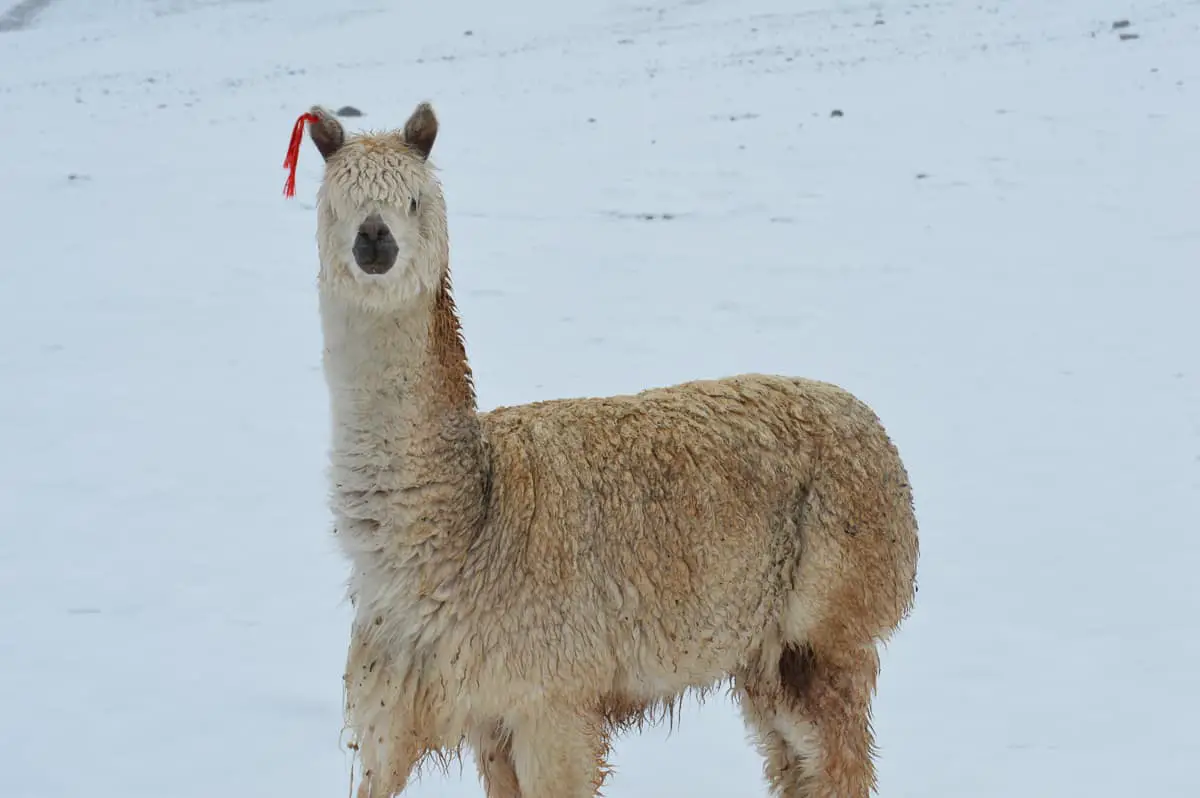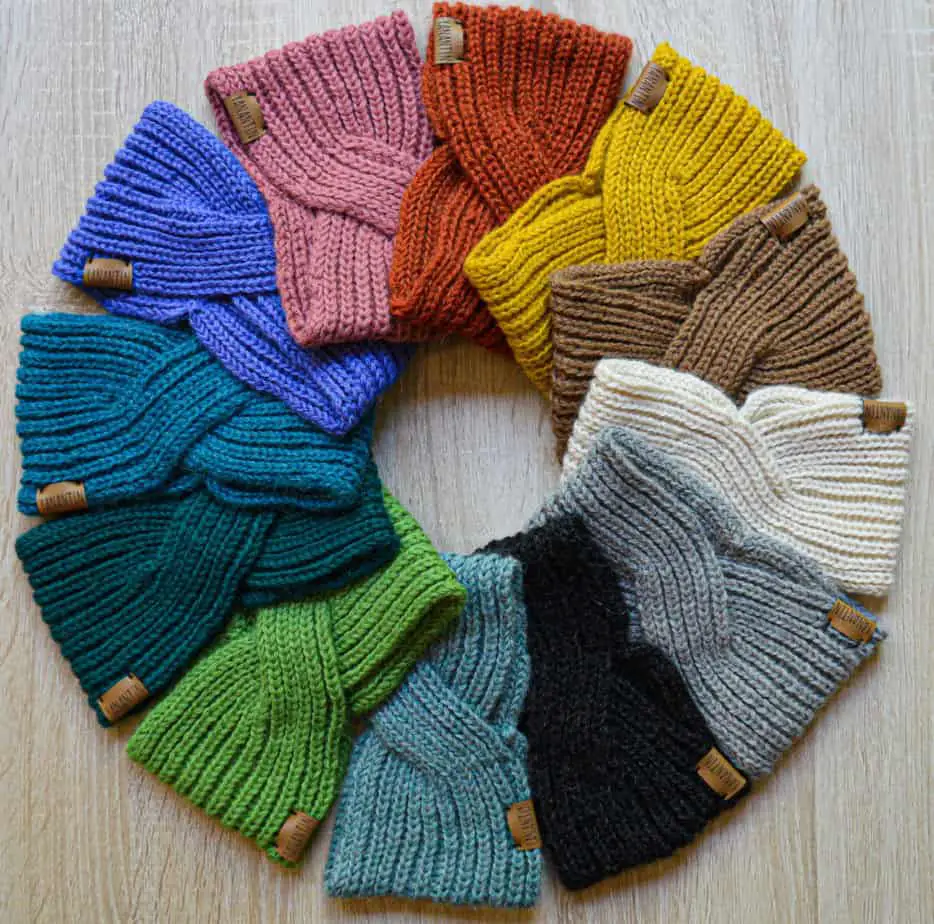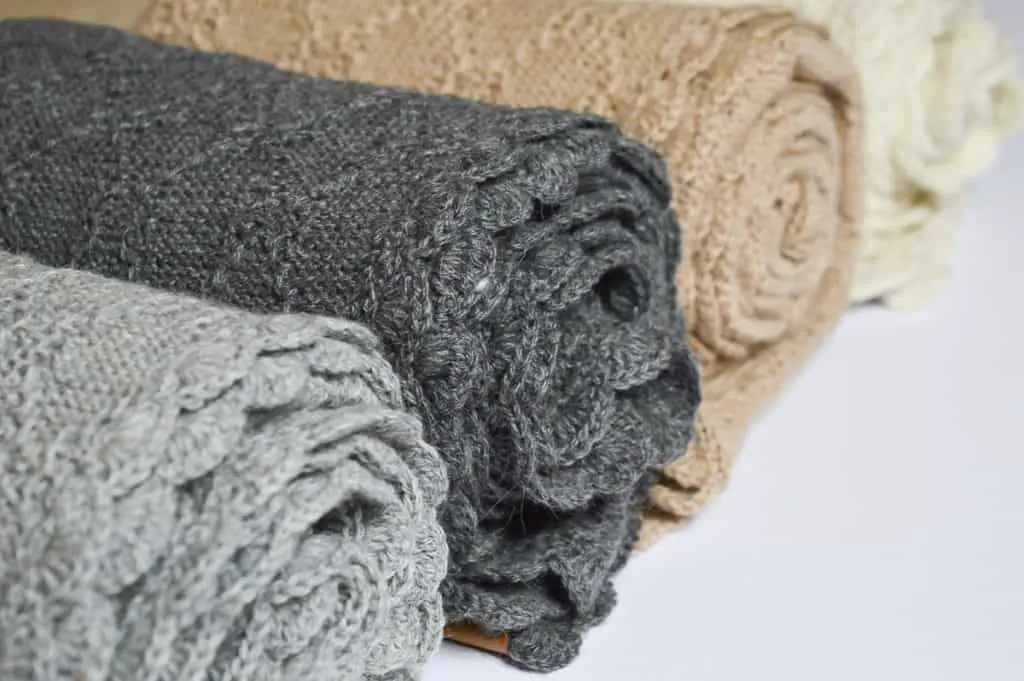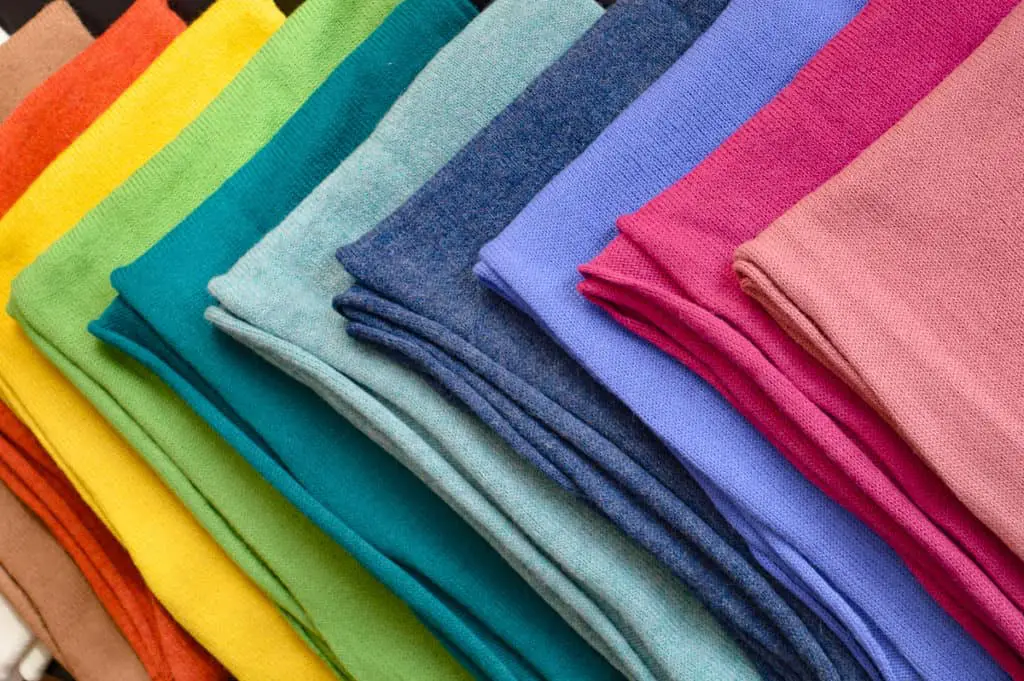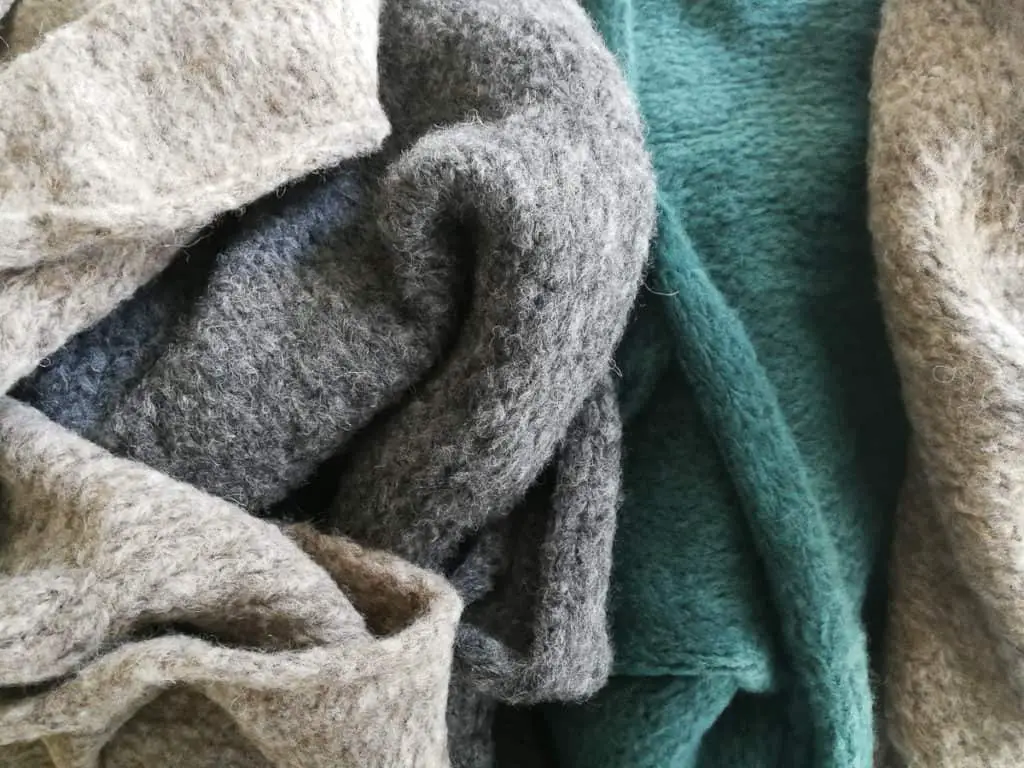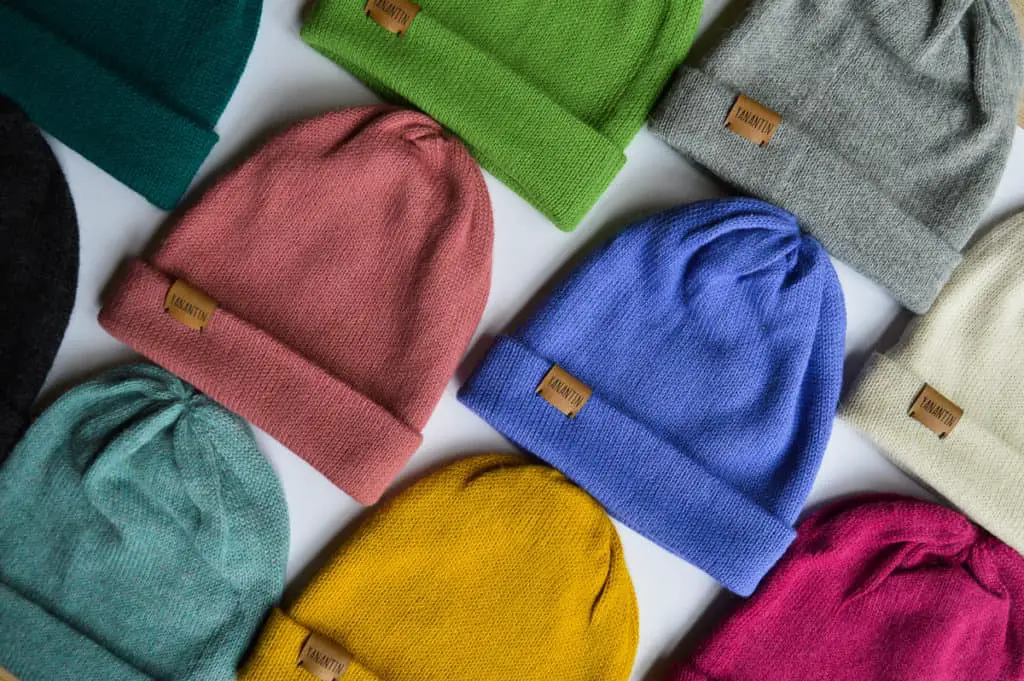If you have ever seen an alpaca, you can easily see why alpaca wool is soft and fluffy. However, you might wonder if alpaca wool is also warm? Let’s find out how warm alpaca wool actually is.
Isawa In a 0°F (-17.78°C) atmosphere, wearing an alpaca woolen sweater will make your body feel as if it is in an environment of about 50°F (10°C). On top of that, alpaca wool also protects you from rain and wind, protecting you from wind chill and lower skin temperature.
Soft and warm, then. Wind and water resistant, too. And you can even wear alpaca wool in summer. How does this miraculous fiber do all that?
How Warm Is Alpaca Wool?
According to Wild Hair Alpacas, it has been reported that wearing alpaca woolen items in an atmosphere of 0°F (-17.78°C), gives you a comfort range of about 50°F (10°C) degrees.
The best way to explain how warm alpaca wool really is, is by comparing temperatures: when you’re outside in 0°F (-17.78°C) degrees in nothing but a T-shirt, you will probably be cold, right? Now, if you put on an alpaca woolen sweater in the exact same environment and temperature, your body will soon feel as if it is at 50°F (10°C) degrees.
A more intuitive way to look at it, perhaps, is to see the alpaca in its natural environment: if an alpaca stays warm with nothing but its fur, then that same hair should keep you warm. In the Andes, the average annual temperature is 44°F (7°C). So you can expect an alpaca woolen garment to keep you comfortably warm in a similar environment.
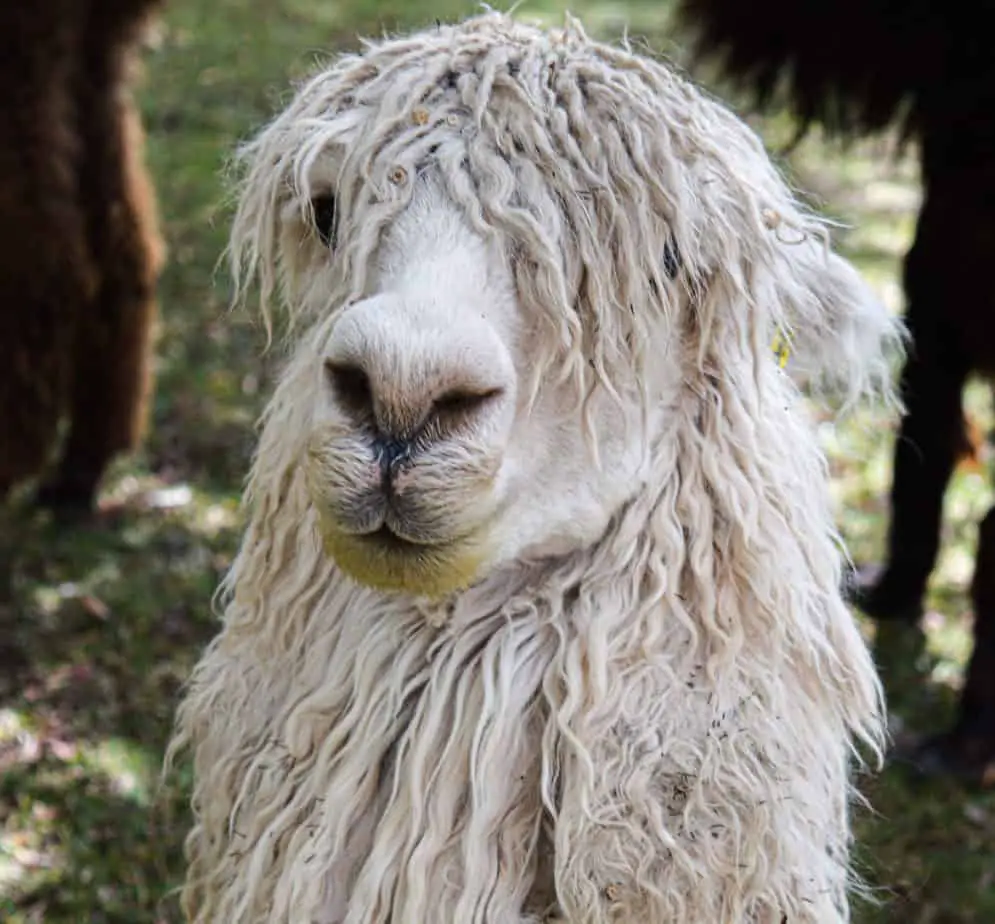
Why Is Alpaca Wool Warm?
If you think logically, alpacas live in the Andean highlands where temperatures can drop cold at night. Sheep live in more moderate climates, and even though they are pretty rough animals, tough enough to keep out a lot of cold, alpacas definitely win this battle with their fluffy fleeces.
http://mccallsnurseries.com/core/misc/drupal.js Here are three main reasons why alpaca wool is warmer than most other types of fiber:
- Fiber structure
- Water resistance
- Wind resistance
1. Fiber Structure Traps Air
Alpaca wool has a hollow fiber: a medullated core in the middle of the fiber, surrounded by the cortex. This hollow core is ideally continuous, so that more air can be trapped. Also, fractionated or interrupted medullas can cause the fiber to become brittle and break.
The medullated core of the alpaca fiber is one of its main characteristics. Interestingly enough, fine fibers shouldn’t have a medulla (the lack of the medulla makes them softer and stronger). Yet the fiber of the alpaca does have the hollow fiber and the warmth.
A general rule of thumb is that the coarser the fiber, the more medullated it is. Higher medullation means pricklier, but warmer wool. When a fiber is medullated, there is room for air that can be heated up and work as a warm and protective layer.
Medullation is therefore not necessarily a bad thing. Just keep in mind that softer fleeces (like baby and royal alpaca of respectively 23 and 18 microns), will be slightly less warm than regular alpaca (generally between 23 and 28 microns). On the other hand, medullated fibers will be lighter because they are hollow.
2. Water Resistance Helps Stay Warm
Alpaca wool has perfect water-resistant features. Not only is it capable of absorbing a large percentage of its own body weight, it also wicks away most of the water (rain or sweat) before it gets into the fiber. On top of that, the hollow fiber works to evaporate any excess moisture that has found its way in.
When wool fibers can absorb lots of water, it means that the fabric doesn’t get clammy or sticky (read: cold and wet) on your skin. It is a great feature to protect you from harsh elements.
Keep in mind that alpaca wool eventually will get cold and wet as long as it rains long and heavy enough. It does provide, however, great protection.
Want to know more about How Water Resistant Alpaca Wool Really Is? Check out my article by clicking the link.

3. Wind Resistance Keeps Cold Out
Just like water resistance, wind resistance definitely contributes to feeling warm. Oh those days when the sun shines beautifully, but the wind just makes it freezing cold. I love those sunny days, not those windy winds, though.
Alpaca wool has some degree of wind resistance, depending on the stitch and pattern that are used for your garment. The tighter and firmer a garment has been knitted, the more protection it will bring you.
Being wind resistant is important for wind chill (read more on Wikipedia). The wind chill factor can be caused by wind and cold that causes body heat to leave the body, resulting in the skin temperature dropping and thus possibly the body temperature.
Want to know more about How Wind Resistant Alpaca Wool Really Is? Check out my article by clicking the link.
- This article is not about the science behind the difference between hot and cold, it is about you being comfortable in cold weather. In order to understand when and why you feel comfortable I’m taking you on a little science trip.
How Our Bodies Perceive Cold
Normally, when your body perceives cold temperatures, it feels as if your body is colder than usual. This doesn’t mean that your body temperature necessarily is lower than usual, just that you feel that way.
You can feel cold while your body temperature is normal. It is the perception of cold that makes us feel cold.
Now, of course, if it is -50°F outside, we could objectively say that it IS cold. Being exposed to low temperatures will eventually make your body temperature go down. However, if you dress up for such temperatures, you probably no longer feel cold.
There is a physiological process that can explain our perception: when we enter a cold environment, our bodies respond. These responses can be compared to defense mechanisms, and include sending blood to your vital organs (to stay alive), raising the muscle activity and limiting the blood flow by narrowing the veins to the skin (which maintains heat).
How Our Bodies Perceive Heat
Perceiving heat is a similar process. When we feel hot, our body perceives a higher temperature than its normal temperature. Being exposed to high temperatures can eventually raise our body temperature. This means that our body will need to work to cool down, and it does so by sweating, for example.
According to Healthline, the average body temperature for adults ranges from 97°F (36.1°C) to 99°F (37.2°C). Our bodies are designed to maintain this temperature. This is called thermoregulation.
Despite our bodies’ ability to maintain a constant temperature, it is important for us to dress accordingly to the weather circumstances that we find ourselves in. If we are exposed to extreme (hot or cold) temperatures for too long, our bodies will no longer be able to maintain an adequate temperature. In such cases, hyperthermia and hypothermia can occur.
A great way to make sure your body is protected is by wearing appropriate clothing.
How Our Bodies Perceive Alpaca Wool
Wool in general, and alpaca wool in particular, is one of the materials that can be used. It is natural, breathable, and… insulating. When we wear clothes to protect our bodies from low temperatures, our bodies can heat up, without using all its extra energy in order to survive.
Alpaca wool increases the temperature that you feel your body is in, even though it is cold outside. It helps your body to maintain its normal temperature and does so when the body itself wouldn’t be able to maintain its thermoregulation.

Is Alpaca Wool the Warmest of All (Wool) Fibers?
Alpaca wool is warm, but there are some fibers out there that are even warmer than alpaca wool.
- The big winner is qiviut: the underdown (or innerwool) that comes from a big fluffy muskox. The warmest wool on Earth. Why not all go for qiviut then? Well, … It’s SUPER expensive!
- Another warm friend is the angora goat that produces cashmere: depending on who you ask, it could be between 3 to 7 times warmer than sheep’s wool. Unfortunately, cashmere production has increased over the past decades and it is debatable whether it is still sustainable or not.
- Angora wool is said to be 6 times warmer than sheep’s wool, but is also extremely expensive and at the moment negatively known because of its highly unethical practises.
- Yak wool is my personal favorite after alpaca wool. I just love the name. YAAAAAK. It sounds so good. Yak fiber is also warm, and according to Wikipedia, it is supposed to be warmer than sheep’s wool.
- Another warm, fuzzy friend in line is the bison. Bison wool is used as a by-product from the meat industry. I have found very few (but awesome, sustainable brands) that work with bison-wool, so if you’re looking to get yourself an exclusive fur… Bison’s the way to go.
- Regular sheep wool, merino wool, llama wool and mohair, are also warm (all to a similar degree). More importantly, they are insulating. That means that as long as you are warm, these wool fibers will use your body temperature to keep you warm.
At the end of the day, alpaca wool is warmer than most of its animal-friends, yet much more affordable than the really exclusive fibers.
Can You Wear Alpaca Wool to Stay Cool?
Staying warm is one thing… But, what about sudden changes in temperature and unforeseen sunshine? Alpaca to the rescue! It isn’t only insulating, it is also isolating.
When something is isolating it means that it can keep things out. And things can be sunshine, UV radiation (partially), or a hotter atmosphere.
That hollow fiber that I have discussed so extensively earlier in this article, doesn’t only work as a tiny, miniature heater, but it also works as a protective layer when hot sun rays are beaming at you.
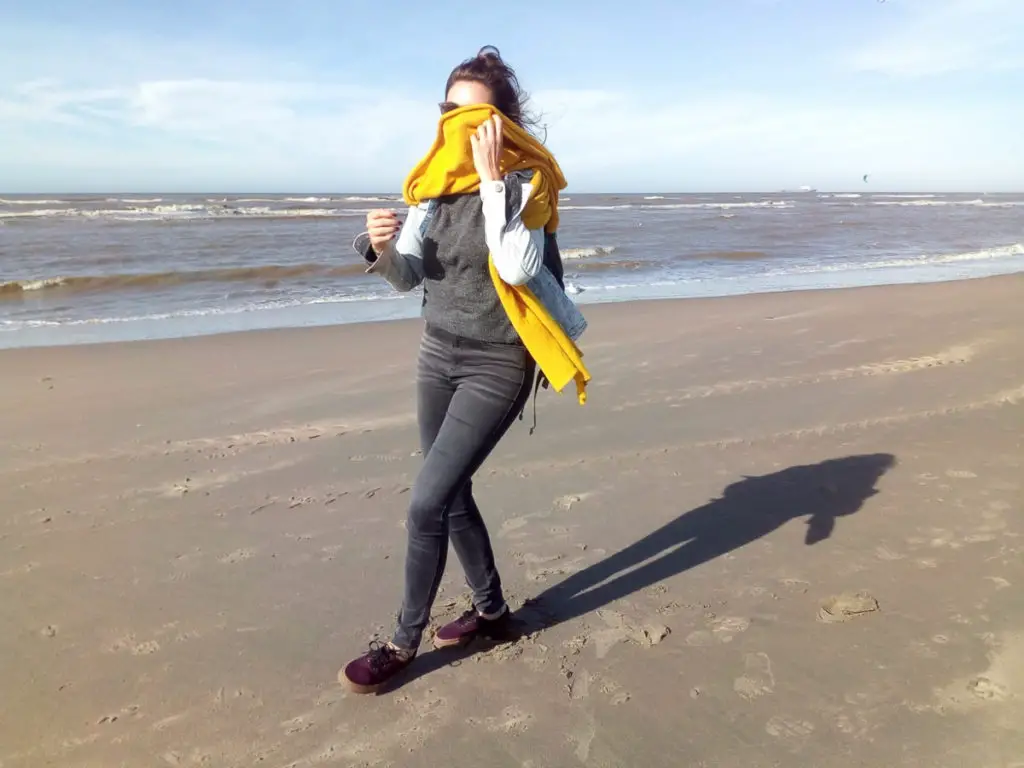
Another added benefit is that alpaca doesn’t make you sweat, because it is very breathable. In case moist or body sweat does appear, alpaca wool can absorb much of that without it making you feel wet. When the fiber absorbs moisture, it evaporates it and sends it back into the Universe.
This awesome feature assures that you can wear alpaca wool inside AND outside. Now why does that matter, you might wonder? Remember the last time you were wearing your warm, warm, winter coat, when it was freeeeeezing cold outside… The second you set foot indoors, your body would react to the heat inside the house (assuming the heaters were on, yeah?) and you would start to sweat and overheat in no-time.
Alpaca wool doesn’t make you do that. It protects you from the cold outside, maintaining your body temperature. Then, when you step into a hot environment, it works to cool you down (again, while maintaining your body temperature and by removing sweat).
Alpaca wool works indoors, outdoors, in hot weather and in cold weather, and whether any of those be rainy, windy, or sunny… Alpaca’s got your back (and front, left side, right side, etc…). Want one of those superfiber garments for yourself? Check out my store. It’s made to empower women in Bolivia and Peru.
Why Am I Cold Wearing Alpaca Wool?
I recently received an email from someone who was wondering why her body felt cold wearing alpaca wool. Here’s why you can feel cold wearing alpaca wool.
The main reason for feeling cold is because an alpaca woolen garment needs some time to heat up. As you’ll notice, alpaca wool can be quite cold to the touch before wearing it. And only after wearing it, it will adjust to your temperature. However, how long it takes before it’s comfortably warm, depends on the thickness of the garment.
Other aspects that influence how long it takes is the size and fit of the garment: normally, the tighter the fit, the better it heats up your body (like with thermals). A loose cardigan is definitely comfy, but can be a little less warm (and will need more time to heat up the cold air underneath).
The knit might also matter: if it’s thick and chunky, it will be warmer, but cold at first (hard to heat up) and if it’s loosely knitted and thin yarn it will not get very warm at all. The cold will just go through and there’s no way to heat it up.
Another influence can be the base layer that you’ll be wearing. A breathable baselayer should help heat up faster so that your body heat can pass through to the alpaca layer. Cotton, linen and silk are great breathable baselayers.


